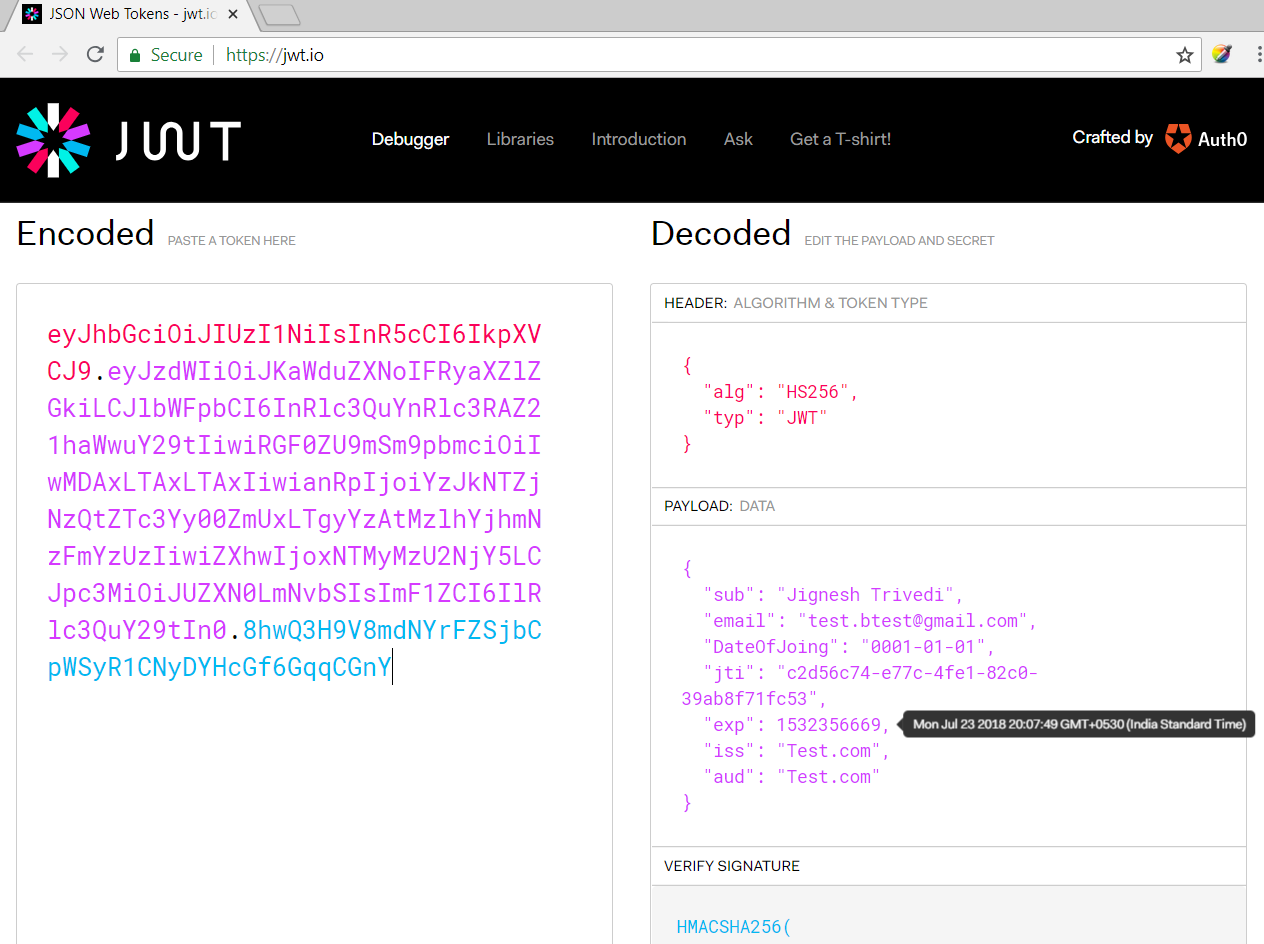Java Generate Same Secret Key From String
Public SecretKeySpec(byte key, int offset, int len, String algorithm) Constructs a secret key from the given byte array, using the first len bytes of key, starting at offset inclusive. The bytes that constitute the secret key are those between keyoffset and keyoffset+len-1 inclusive. Random String Generator. This form allows you to generate random text strings. The randomness comes from atmospheric noise, which for many purposes is better than the pseudo-random number algorithms typically used in computer programs.
Get started with the Azure Key Vault client library for Java. Follow the steps below to install the package and try out example code for basic tasks.
Azure Key Vault helps safeguard cryptographic keys and secrets used by cloud applications and services. Use the Key Vault client library for Java to:
- Increase security and control over keys and passwords.
- Create and import encryption keys in minutes.
- Reduce latency with cloud scale and global redundancy.
- Simplify and automate tasks for TLS/SSL certificates.
- Use FIPS 140-2 Level 2 validated HSMs.
Source code API reference documentation Product documentation Samples
Prerequisites
- An Azure subscription - create one for free.
- Java Development Kit (JDK) version 8 or above
- Azure CLI or Azure PowerShell
This quickstart assumes you are running Azure CLI and Apache Maven in a Linux terminal window.
Setting up
Create new Java console app
In a console window, use the mvn command to create a new Java console app with the name akv-java.
The output from generating the project will look something like this:
Change your directory to the newly created akv-java/ folder.
Install the package
Open the pom.xml file in your text editor. Add the following dependency elements to the group of dependencies.
Create a resource group and key vault
Java Generate Same Secret Key From String Lights
This quickstart uses a pre-created Azure key vault. You can create a key vault by following the steps in the Azure CLI quickstart, Azure PowerShell quickstart, or Azure portal quickstart. Alternatively, you can run the Azure CLI commands below.
Important
Each key vault must have a unique name. Replace
Create a service principal
The simplest way to authenticate a cloud-based application is with a managed identity; see Use an App Service managed identity to access Azure Key Vault for details. For the sake of simplicity however, this quickstart creates a desktop application, which requires the use of a service principal and an access control policy.
Create a service principle using the Azure CLI az ad sp create-for-rbac command:

This operation will return a series of key / value pairs.
Take note of the clientId, clientSecret, and tenantId, as we will use them in the next two steps.
Give the service principal access to your key vault
Create an access policy for your key vault that grants permission to your service principal by passing the clientId to the az keyvault set-policy command. Give the service principal get, list, and set permissions for both keys and secrets.
Set environmental variables
The DefaultAzureCredential method in our application relies on three environmental variables: AZURE_CLIENT_ID, AZURE_CLIENT_SECRET, and AZURE_TENANT_ID. use set these variables to the clientId, clientSecret, and tenantId values you noted in the Create a service principal step, above. Use the export VARNAME=VALUE format to set your environmental variables. (This method only sets the variables for your current shell and processes created from the shell; to permanently add these variables to your environment, edit your /etc/environment file.)
You will also need to save your key vault name as an environment variable called KEY_VAULT_NAME.
Object model
The Azure Key Vault client library for Java allows you to manage keys and related assets such as certificates and secrets. The code samples below will show you how to create a client, set a secret, retrieve a secret, and delete a secret.
The entire console app is below.
Pinnacle studio 23 ultimate key. Given this fact, you should use Pinnacle Studio 23 Portable to boost your work in a voice synthesizer. Pinnacle Studio With CrackSo, after the crack path ends. Maybe you can restart your computer. Once you start the computer again, you must have the overall model of the system.
Code examples
Add directives
Add the following directives to the top of your code: Public key definition.
Authenticate and create a client
Authenticating to your key vault and creating a key vault client depends on the environmental variables in the Set environmental variables step above. The name of your key vault is expanded to the key vault URI, in the format https://<your-key-vault-name>.vault.azure.net.
Save a secret
Now that your application is authenticated, you can put a secret into your keyvault using the secretClient.setSecret method. This requires a name for the secret -- we've assigned the value 'mySecret' to the secretName variable in this sample.
You can verify that the secret has been set with the az keyvault secret show command:
Retrieve a secret
You can now retrieve the previously set value with the secretClient.getSecret method.
You can now access the value of the retrieved secret with retrievedSecret.getValue().
Delete a secret
Finally, let's delete the secret from your key vault with the secretClient.beginDeleteSecret method.
You can verify that the secret is gone with the az keyvault secret show command:
Clean up resources
Java Create Secret Key From String
When no longer needed, you can use the Azure CLI or Azure PowerShell to remove your key vault and the corresponding resource group.
Sample code
Next steps
In this quickstart you created a key vault, stored a secret, and retrieved that secret. To learn more about Key Vault and how to integrate it with your applications, continue on to the articles below.
- Read an Overview of Azure Key Vault
- See the Azure Key Vault developer's guide
- Review Azure Key Vault best practices